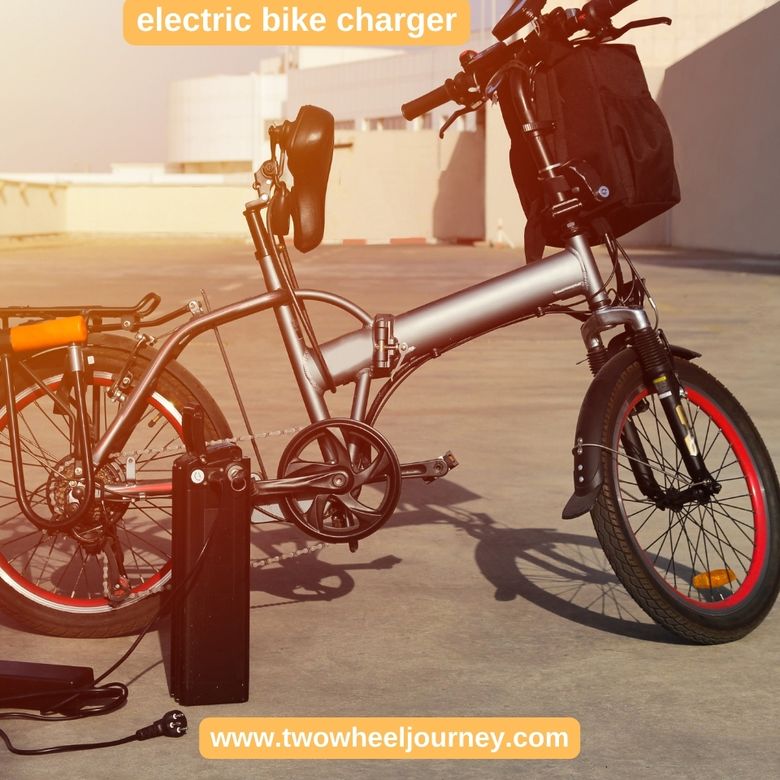Electric bikes (e-bikes) have revolutionized the way we commute, offering a greener and more efficient alternative to traditional transportation methods. Central to the functionality of these innovative vehicles is the electric bike charger, a crucial component that ensures your e-bike is always ready to hit the road. Just as a car needs fuel, an electric bike depends on a reliable charger to keep its battery powered. Understanding how your e-bike charger works, the different types available, and the best practices for charging can significantly enhance your riding experience and prolong the life of your bike’s battery.
Whether you’re a daily commuter navigating through urban streets, an adventurous rider exploring off-road trails, or a casual cyclist enjoying weekend rides, the right charger can make all the difference. In this guide, we’ll delve into the essentials of electric bike , from their technology and functionality to tips on maintenance and usage. By the end, you’ll have a comprehensive understanding of this pivotal piece of equipment, ensuring you can make the most of your e-bike’s capabilities while contributing to a more sustainable future.
Efficient Charging: Top Electric Bike Chargers for Every Rider
Electric bikes (e-bikes) are becoming increasingly popular as more people seek eco-friendly and efficient transportation alternatives. Central to the performance and longevity of an e-bike is its charger. This guide will explore the top electric bike on the market, delving into their features, benefits, and why they are essential for every e-bike rider. We’ll also provide tips on choosing the right charger and best practices for maintaining and using it.For more information visit here
Table of Contents
Understanding Electric Bike Chargers
What is an Electric Bike Charger?
An electric bike is a device that replenishes the battery of an e-bike. It converts AC (alternating current) from your home or office into DC (direct current) to charge the e-bike’s battery. Chargers come in various types and power ratings, each designed to meet different charging needs and battery specifications.
How Do Bike Chargers Work?
bike chargers work by drawing AC power from a wall outlet, converting it to DC power, and regulating the voltage and current to safely charge the e-bike’s battery. Most chargers have built-in safety features such as overcharge protection, short-circuit protection, and thermal protection to ensure safe and efficient charging.
Types of Electric Bike Chargers
Standard Chargers
Standard chargers typically provide a moderate charging speed and are ideal for regular use. They are affordable and easy to use, making them suitable for most e-bike riders. Standard chargers usually take 4-6 hours to fully charge a depleted battery.
Fast Chargers
Fast chargers significantly reduce charging time, making them perfect for riders who need their e-bike ready quickly. These chargers provide higher current output, allowing for faster charging but may generate more heat. It’s essential to ensure your battery can handle fast charging to avoid damage.
Smart Chargers
Smart electric bike charger come equipped with advanced features such as automatic shut-off, charge optimization, and status indicators. They can adjust the charging rate based on the battery’s condition, prolonging its lifespan and ensuring safe charging. Smart chargers are ideal for those who want a more sophisticated and reliable charging solution.
Portable Chargers
Portable chargers are compact and lightweight, designed for on-the-go charging. They are perfect for long trips or emergencies when you need to recharge your battery away from home. Portable chargers are typically slower than standard or fast chargers but offer the convenience of mobility.
Top Electric Bike Chargers for Every Rider
1. Bosch Standard Charger
Features:
- Output: 4A
- Charge Time: 4-5 hours
- Compatibility: Bosch e-bike systems
The Bosch Standard Charger is known for its reliability and efficiency. It provides a balanced charging speed, making it perfect for daily use. Its compact design and lightweight construction make it easy to carry, and it comes with safety features to prevent overcharging and overheating.
2. Cycle Satiator by Grin Technologies
Features:
- Output: Up to 8A
- Charge Time: Varies by setting
- Compatibility: Universal
The Cycle Satiator is a versatile and programmable charger suitable for various electric bike charger batteries. It allows users to customize charging profiles, making it possible to optimize charge cycles for different battery types. Its robust build and advanced features make it a top choice for serious e-bike enthusiasts.
3. Luna Cycle Advanced Charger
Features:
- Output: 5A
- Charge Time: 3-4 hours
- Compatibility: Universal
The Luna Cycle Advanced electric bike charger offers fast and efficient electric bike charger with adjustable current settings. It includes features like a cooling fan, LED indicators, and a durable design. This charger is ideal for riders looking for a fast-charging solution without compromising safety.
4. Shimano Steps EC-E8004 Charger
Features:
- Output: 4A
- Charge Time: 4-5 hours
- Compatibility: Shimano Steps systems
The Shimano Steps EC-E8004 is a reliable charger designed specifically for Shimano e-bike systems. It provides consistent charging performance and includes safety features such as overcharge and short-circuit protection. Its sleek design and easy operation make it a popular choice among Shimano e-bike users.
5. Juiced Bikes 2 Amp Charger
Features:
- Output: 2A
- Charge Time: 6-7 hours
- Compatibility: Juiced Bikes
The Juiced Bikes 2 Amp Charger is a standard charger that offers dependable performance at an affordable price. It’s perfect for regular charging needs and includes safety features to protect the battery. Its compact design makes it easy to store and transport.

How to Choose the Right Electric Bike Charger
Compatibility
Ensure the charger is compatible with your e-bike’s battery. Check the voltage and connector type to avoid any mismatches that could damage your battery or charger.
Charging Speed
Consider your charging needs. If you require fast charging, opt for a fast charger, but make sure your battery can handle it. For regular use, a standard charger is usually sufficient.
Safety Features
Look for electric bike charger with built-in safety features such as overcharge protection, short-circuit protection, and thermal protection. These features are crucial for preventing damage to your battery and ensuring safe operation.
Portability
If you need to charge your e-bike on the go, consider a portable charger. While they may charge slower, their compact size and lightweight design make them convenient for travel.
Smart Features
Smart electric bike charger with advanced features like automatic shut-off, charge optimization, and status indicators can enhance the charging experience and prolong battery life. These chargers are ideal for those who want a more sophisticated and reliable charging solution.
Best Practices for Charging Your Electric Bike
Charge Regularly
Regular charging helps maintain the battery’s health. Avoid letting the battery fully discharge before recharging, as this can shorten its lifespan.
Avoid Overcharging
Most modern chargers have built-in overcharge protection, but it’s still a good practice to unplug the charger once the battery is fully charged. Overcharging can damage the battery and reduce its capacity over time.
Store Properly
Store your electric bike charger and battery in a cool, dry place. Extreme temperatures can affect their performance and longevity. Avoid exposing them to direct sunlight or high humidity.
Check for Damage
Regularly inspect your charger and battery for any signs of damage, such as frayed cables or cracks. Using damaged equipment can be dangerous and should be repaired or replaced immediately.
Follow Manufacturer Guidelines
Always follow the manufacturer’s guidelines for charging. Different batteries and chargers have specific requirements, and adhering to these can help ensure safe and efficient charging.
Frequently Asked Questions (FAQs) About Electric Bike Chargers
1. Can I Use Any Charger for My E-Bike?
No, you should only use a charger that is compatible with your e-bike’s battery. Using an incompatible charger can damage the battery, reduce its lifespan, or even pose safety risks such as overheating or fires. Always check the voltage, current, and connector type before using a new charger.
2. How Long Does It Take to Charge an E-Bike Battery?
Charging time varies based on the charger and the battery capacity. Standard chargers typically take 4-6 hours to fully charge a battery, while fast chargers can reduce this time to 2-3 hours. However, fast charging might generate more heat and stress the battery, potentially reducing its lifespan.
3. Is It Safe to Leave My E-Bike Charging Overnight?
Modern chargers usually have built-in overcharge protection, making it relatively safe to leave your electric bike charger bike charging overnight. However, it is still good practice to unplug the charger once the battery is fully charged to avoid unnecessary stress on the battery.
4. How Can I Prolong My E-Bike Battery’s Lifespan?
To prolong your e-bike battery’s lifespan:
- Charge it regularly and avoid deep discharges.
- Store it in a cool, dry place away from extreme temperatures.
- Avoid overcharging by unplugging the charger when the battery is full.
- Use the correct charger and follow the manufacturer’s guidelines.
- Perform regular maintenance checks for any signs of damage or wear.
5. What Are the Signs of a Faulty Charger?
Signs of a faulty charger include:
- The electric bike charger gets excessively hot during use.
- The battery does not charge or charges very slowly.
- The charger makes unusual noises or emits a burning smell.
- The indicator lights (if available) do not function correctly. If you notice any of these signs, stop using the charger immediately and have it inspected or replaced.
6. Can I Use a Car Charger for My E-Bike?
Some e-bike chargers are designed to be used with car outlets (12V DC), but not all. If you plan to charge your e-bike from a car, ensure the charger is specifically designed for this purpose. Using an incompatible charger can damage both the charger and the battery.
Innovations in electric bike charger
Wireless Charging
Wireless charging technology for e-bikes is still in its early stages but promises a convenient way to charge without cables. This technology uses inductive charging, where an electromagnetic field transfers energy between two coils – one in the charging pad and the other in the e-bike. Although currently less efficient than traditional chargers, wireless charging is expected to improve and become more popular in the coming years.
Solar-Powered Chargers
Solar-powered chargers offer an eco-friendly way to electric bike charger using renewable energy. These chargers use solar panels to convert sunlight into electrical energy, which can then be used to charge the battery. They are ideal for outdoor enthusiasts and those who want to reduce their carbon footprint. However, they depend on sunlight availability and may not be as fast or reliable as conventional chargers.
Smart Grid Integration
Future e-bike chargers may integrate with smart grids, allowing for more efficient energy use. These smart chargers could communicate with the grid to charge during off-peak hours when electricity is cheaper and more abundant. They could also support bi-directional charging, where the e-bike battery could supply power back to the grid during peak times, contributing to energy management and reducing overall electricity costs.
Maintaining Your Electric Bike Charger
Regular Cleaning
Keep your charger clean by wiping it down with a dry cloth. Avoid using water or cleaning solutions that could damage the electrical components. Keeping the charger clean helps prevent dust and debris from causing overheating or malfunctioning.
Inspect Cables and Connectors
Regularly inspect the cables and connectors for any signs of wear or damage. Frayed cables or loose connectors can pose safety risks and reduce the efficiency of the charging process. Replace any damaged components immediately.
Proper Storage
Avoid leaving it in direct sunlight or in environments with high humidity or extreme temperatures. Proper storage helps maintain the electric bike charger functionality and longevity
Firmware Updates
If you have a smart charger, check for firmware updates from the manufacturer. These updates can improve charging efficiency, add new features, or enhance safety protocols. Regularly updating your charger ensures it operates at its best.
Future Trends in Electric Bike Charging
Integration with Internet of Things (IoT)
IoT technology can revolutionize e-bike charging by providing real-time data and remote management. Smart chargers could connect to your smartphone or other devices, allowing you to monitor charging progress, receive notifications when charging is complete, and even schedule charging times.
Modular Charging Systems
Modular charging systems could offer flexibility by allowing users to upgrade or customize their chargers based on changing needs. For instance, you could add modules for faster electric bike charger or additional safety features without replacing the entire charger.
Enhanced Battery Management Systems (BMS)
Future chargers may work in tandem with advanced BMS to optimize charging cycles. These systems can analyze the battery’s condition and adjust the charging parameters to extend battery life and improve performance.
Renewable Energy Integration
As renewable energy becomes more accessible, future e-bike chargers could integrate with solar, wind, or other renewable sources. This integration would make e-bike charging even more sustainable and reduce reliance on the grid.
Eco-Friendly Charging Practices
Charge During Off-Peak Hours
electric bike charger your e-bike during off-peak hours can reduce the strain on the power grid and may lower your electricity costs. Many smart chargers allow you to schedule charging times to take advantage of off-peak rates.
Maintain Your Battery
Proper battery maintenance can enhance efficiency and reduce waste. Follow the manufacturer’s guidelines for charging and storage, and avoid practices that can degrade the battery’s health, such as deep discharges and overcharging.
Recycle Old Batteries
When your e-bike battery reaches the end of its life, recycle it properly. Many retailers and manufacturers offer battery recycling programs to ensure that old batteries are disposed of in an environmentally friendly manner.
User Reviews and Recommendations
Bosch Standard Charger
User Review: “I’ve been using the Bosch Standard electric bike charger for over a year now, and it’s been incredibly reliable. It’s fast enough for my daily commute, and I love that it’s lightweight and easy to carry around. The safety features give me peace of mind, knowing that my battery is protected during charging.”
Recommendation: Perfect for regular commuters looking for a reliable and efficient charger.
Cycle Satiator by Grin Technologies
User Review: “The Cycle Satiator is a game-changer for me. I love the customizable charging profiles, which allow me to optimize charging for different battery types. It’s robust and built to last, making it a worthwhile investment for any serious e-bike enthusiast.”
Recommendation: Ideal for enthusiasts who need a versatile and programmable charging solution.
Shimano Steps EC-E8004 Charge
User Review: “The Shimano Steps EC-E8004 electric bike charger is a reliable companion for my e-bike. It’s specifically designed for Shimano systems, and it performs flawlessly every time. The sleek design and safety features make it a top choice.”
Recommendation: Best for Shimano e-bike system users looking for a dedicated charger.
Juiced Bikes 2 Amp Charger
User Review: “The Juiced Bikes 2 Amp Charger is an excellent standard charger. It’s affordable, dependable, and easy to use. It might not be the fastest, but it gets the job done efficiently without any issues.”
Recommendation: Perfect for budget-conscious riders needing a reliable standard charger.
To sum up
The functionality and longevity of your e-bike are greatly enhanced with electric bike chargers. Your battery’s lifespan can be increased, safe and effective charging can be ensured, and you can ride smoothly all thanks to following best practices and selecting the appropriate charger. To meet the demands of every rider, there are numerous solutions available, including normal, rapid, smart, and portable chargers. To help create a more sustainable future, adopt eco-friendly habits and stay up to date on the newest developments and trends in electric bike charger. I hope you have fun charging and riding.










